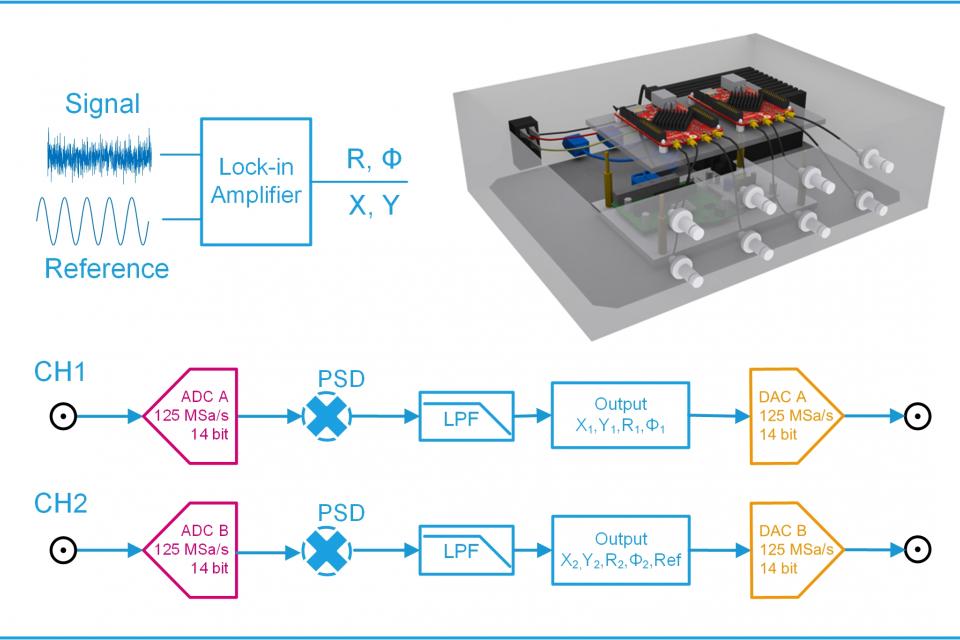Datasets
Standard Dataset
Experimental Data of High-Performance Digital Lock-in Amplifier Module based on an Open-Source Platform
- Citation Author(s):
- Submitted by:
- Wei Cai
- Last updated:
- Fri, 08/26/2022 - 05:05
- DOI:
- 10.21227/4b6k-ns26
- Data Format:
- License:
 419 Views
419 Views- Categories:
- Keywords:
Abstract
This is the data for the paper we prepared titled ''High-performance digital lock-in amplifier module based on open-source FPGA: Implementation and applications''. In this work, a high-performance digital lock-in amplifier module based on an open-source FPGA is constructed. The module is calibrated based on the obtained correction curves of the demodulation results such as amplitude and phase. As demonstrations, the phase difference and thermal noise measurement are carried out by using the module. The research on temperature sensing with the frequency shift of quartz crystals and semiconductor doping concentration measurement has also been implemented. These demonstrations show that the lock-in module has good application prospects.
**Instructions**
Data files are stored according to the number of figures in the main text and supplementary materials.
Fig. 4. the digital oscilloscope results of the LIA functional test.
Fig. 5. the raw data for calibrating the module output under the condition of 500kHz reference signal.
Fig. 6. the results in amplitude and phase difference measurements with an analog phase shifter.
Fig. 7. the noise floor power spectral density of the module and the thermal noise measurement with different values of resistance.
Fig. 8. the frequency response of quartz crystal oscillators.
Fig. 9. the frequency response at different temperatures.
Fig. 10. the measurements for semiconductor doping concentration.
Fig. S2 is the result of evaluating the reference signal with HF2LI
Fig. S3 is the demodulation result at different operating frequencies.
Fig. S4 (a) the reference signal measurements with different frequencies in self-test mode.
Fig. S4 (b), (c), and (d) are the correction coefficients for the demodulated amplitude, intercept and phase signal slopes at different frequencies, respectively.
The open-sourced measurement scripts used here can be found in the link below. [Matlab-scripts-for-RePLIA](https://github.com/wzean/Matlab-scripts-for-RePLIA)






